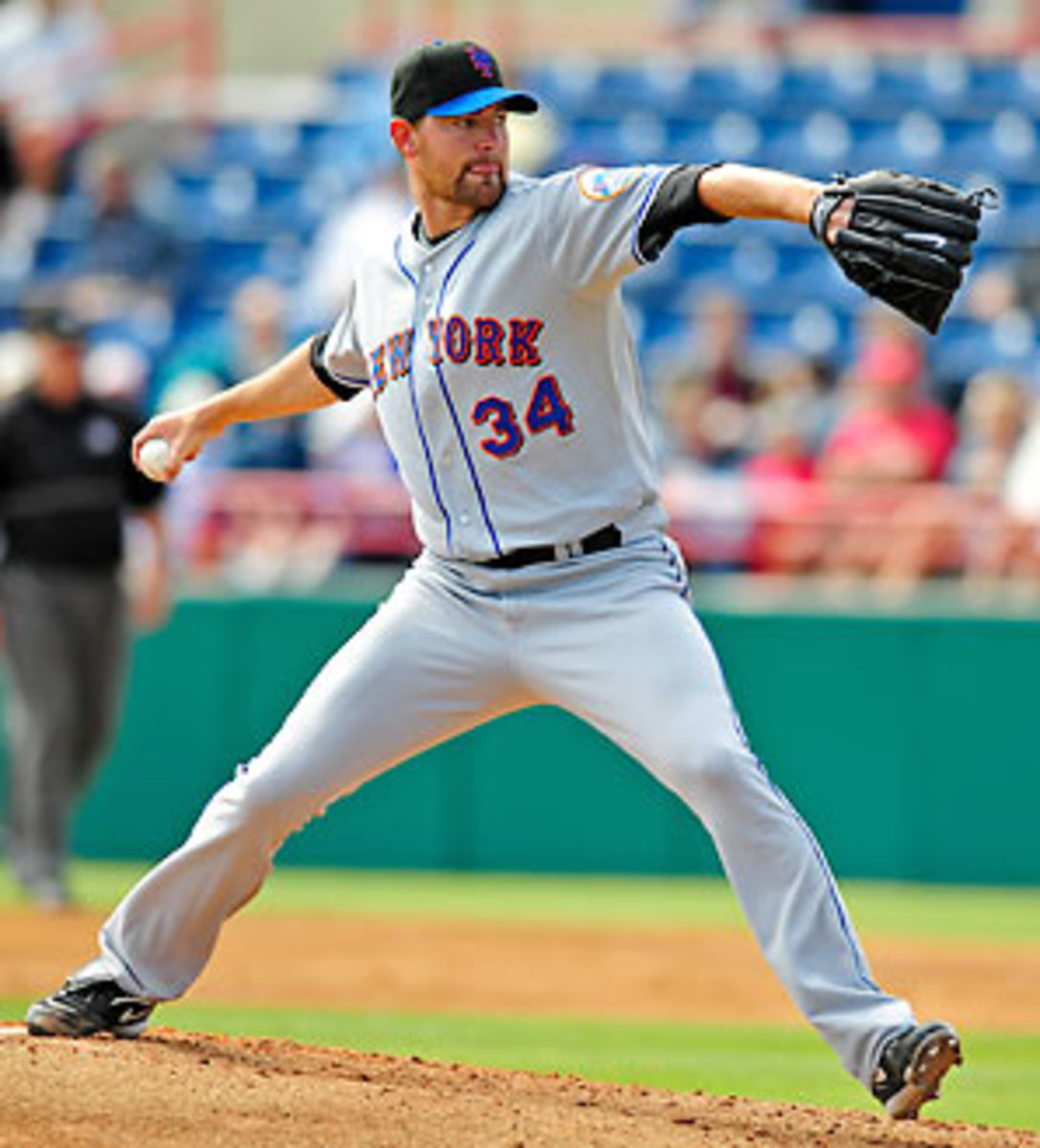
Hamels, Lincecum headline young pitchers at risk of Year-After Effect
"Look at me," the Mets right-hander said one day last month. "I'm a pretty big guy." Yes, sir. Pelfrey is 6-foot-7. Thankfully, he is a rather pleasant, mild-mannered guy.
I didn't feel threatened, but my theory about young pitchers getting overworked was precisely in Pelfrey's crosshairs. Pelfrey was familiar with my rule of thumb that pitchers 25 and under are at risk of injury or significant regression in the year after their clubs boost their workload by 30 or more innings.
The Mets pushed Pelfrey, then 24, 48 innings beyond his previous professional high in innings pitched last year. The club preferred not to do it. In fact, the Mets had mapped out a plan to get Pelfrey about 180 innings last year, but injuries on their staff and a tight pennant race forced the Mets to keep running him out there, rolling the odometer on his innings up to 200 2/3.
Pelfrey knew that I have been tracking such cases for about a decade, but wasn't buying the idea that he should be red-flagged for 2009. His size, for one, was in his favor, he said.
"You've got a point," I told him. After all, the dude is big. "I believe the bigger your frame and the older you are -- guys near 25 are different from a guy who is 21 -- can be mitigating circumstances. They probably put you at less risk -- but still at risk."
"I threw 140 innings at Wichita State -- in three months," Pelfrey said.
"Good point," I said. "That's still not 200."
"The other thing is I bet I went through a lot more stress in 2007 than I did last year," Pelfrey said. "It seemed like I constantly had runners on in 2007, and I really worked to improve my efficiency. So I might have thrown more innings, but I didn't have all those innings with runners on base and high pitch counts."
"I'll have to check that," I said.
Pelfrey was right, but only to a point. He reduced his pitches per inning from 17.7 to 16.6. That's good, but Pelfrey still wound up throwing about 600 more pitches in 2008 than he did in 2007 (minors and majors combined.)
"Here's the thing," I told him, "I never meant this theory to be a one-size-fits-all thing. It was always a rule of thumb, and the idea came from organizations that didn't want to stretch pitchers by more than 25 or 30 innings from one year to the next."
So I agreed with some of what Pelfrey presented. He turned 25 in January and is a big guy, so maybe he withstands his 48-inning jump better than someone younger and smaller. That said, I'm still not taking him off my list of the most at-risk young pitchers of 2009 based on the Year-After Effect. There is a reason why the Mets had an innings threshold in mind for Pelfrey, a reason why the Yankees have treated Joba Chamberlain with kid gloves and a reason, going further back, why Oakland was very careful to manage the innings growth of its young starters almost a decade ago when I first learned about this growing trend: Too much too soon is risky stuff.
This year I red-flagged 10 pitchers -- and the list includes some of the greatest young arms in the game. Here are those pitchers and the innings jumps that put them on the list (innings totals include major, minor and postseason innings; in some cases, the previous pro high occurred in a season other than 2007):
How much should those guys be worried? Over the previous three years I red-flagged a total of 24 young pitchers at the start of those seasons. Of those 24 at-risk pitchers, 16 were hurt in that same season. Only one of the 24 pitchers managed to stay healthy and lower his ERA: Ubaldo Jimenez of Colorado, a guy I said would be less at risk because of his powerful body type.
In the early years of my tracking the Year-After Effect, the Royals notoriously pushed young pitchers to awful results (Jose Rosado, Chris George, Runelvys Hernandez, Mac Suzuki, etc.). The Pirates have supplanted the Royals as the worst offenders (Zach Duke, Paul Maholm, Tom Gorzelanny). It's one thing for the Mets to push Pelfrey with a playoff spot at stake, but it's hard to explain why a rebuilding franchise would put young starters at risk in meaningless games in September.
Last year I red-flagged seven pitchers: Jimenez, Gorzelanny, Ian Kennedy (Yankees), Dustin McGowan (Blue Jays), Chad Gaudin (Cubs), Yovani Gallardo (Brewers) and Fausto Carmona (Indians). Except for Jimenez all of them broke down with injuries -- some of them serious, not all arm-related -- and combined to go 29-32. None won 10 games. Previous blowouts that were red-flagged included Francisco Liriano, Gustavo Chacin, Anibal Sanchez, Adam Loewen and Scott Mathieson.
What does that mean for the 10 red flags for 2009? Don't panic, though Cole Hamels, whose elbow was barking in spring training, isn't completely out of the woods just yet. When I talked with Boston pitching coach John Farrell this spring about the Year-After Effect on Lester, for instance, Farrell insisted that he has no worries whatsoever about the left-hander. Farrell said Lester is bigger, stronger and throwing harder than he did a year ago. "His progression has been everything you look for," Farrell said.
Like Pelfrey, Lester has age (he turned 25 in January) and size (6-2, 200) on his side. The red flags seem riskier for pitchers such as Hamels (slight build, mild injury history), Tim Lincecum (famously slight build) and Clayton Kershaw (age 21). Indeed, the entire Los Angeles Dodgers season might be riding on this list, with the club counting heavily on Kershaw and Chad Billingsley.




